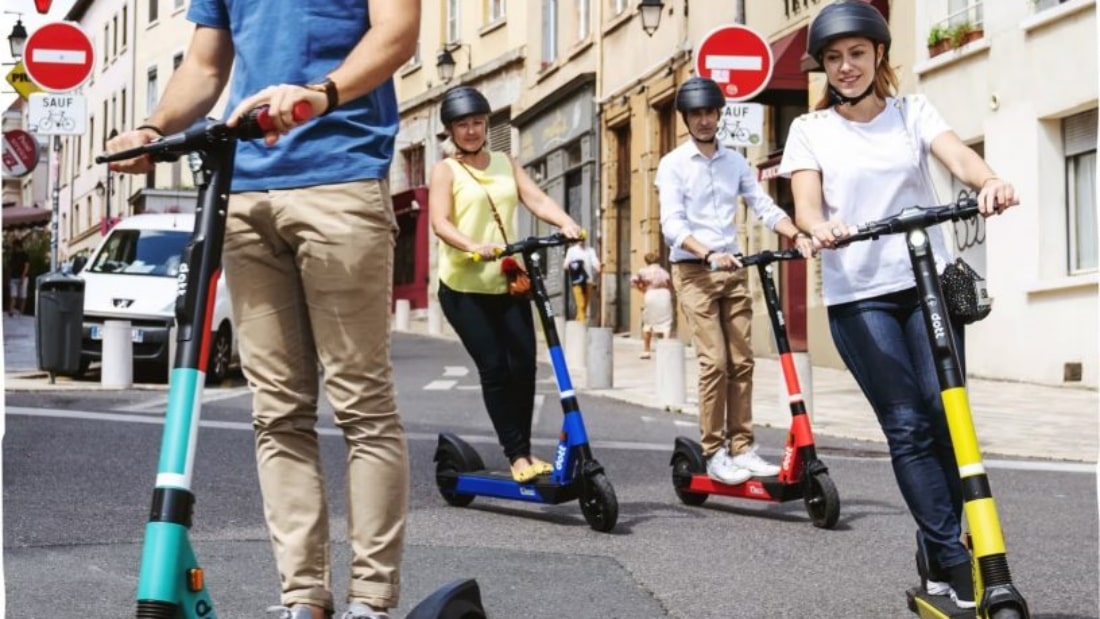
E-scooter industry recommendations published by micromobility operators
481 days ago
5 minutes
Source: Futuretransport-News, T. May
Micromobility operators including LEVA-EU member Dott, alongside Voi, Lime, Superpedestrian and TIER, have collaborated on publishing industry recommendations to European cities on the best practices for safe and well-managed micromobility services
To support the increasing uptake of micromobility services in numerous cities, a report outlining best practices has been prepared by five operators, designed to assist cities move from pilot programmes to permanent regulations.
The report was signed by Henri Moissinac, CEO of LEVA-EU member Dott; Wayne Ting, CEO of Lime; Assaf Biderman, CEO of Superpedestrian; Lawrence Leuschner, CEO of TIER Mobility; and Fredrik Hjelm, CEO of Voi.
It highlights several common features of well-managed micromobility programmes, with regard to both administration and operations.
Number of Operators
A balance should be sought between avoiding oversaturation, while maintaining customer choice and healthy competition. The suggested guideline is that markets deploying over 1,000 e-scooters have a minimum of two and maximum of three operators.
Fleet Size
Manageability of fleet size and maintaining tidiness is key; an initial fleet should comprise 80-120 vehicles per square kilometre.
Programme Length
A programme should run for sufficient time to allow users to rely on vehicle availability, and for the set-up and evaluation of the services. The report recommends a minimum of two years for pilot schemes, and three-four years for permanent programmes.
Contracts of this length could encourage operators to make longer-term investments in the cities.
Operator Fees
The fees to cover the costs of programme administration and public space occupancy should be consistent with those paid by similar modes, such as bike shares.
If required, this should be a fixed annual fee per e-vehicle which is set prior to vendor selection and applies consistently across all operators.
The operators claim that this would avoid negative outcomes such as overpromising on financial commitments or winning bids and then withdrawing due to unsustainable fees.
They also ask that the fees recognise that e-scooter schemes are typically not subsidised.
Data Sharing
The five operators emphasise the value of uniform and automated data sharing through GBFS (General Bikeshare Feed Specification) and MDS (Mobility Data Specification) protocols.
This allows for the consistent submission of data while protecting rider privacy.
The use of these protocols enables operators to spend more time working with cities to provide useful data rather than having to build bespoke data provision.
Selection Process
The operators state that tenders are generally the best approach for identifying suitable micromobility operators in each city.
License structures and free markets are less desirable, as they encourage oversaturation and poorly managed fleets.
The report emphasises that operators should also never be selected based on financial contribution, as this can lead to an inability to deliver quality services when the business is not economically sustainable.
Instead, tenders should prioritise reliability, safety, sustainability and fleet management.
In addition, the operators ask that cities avoid issuing tenders that specify technology or operational practices, especially those that are just emerging, as this can limit innovation.
In comparison, outcome-based and technology-neutral requirements encourage operators to use their experience and creativity to mitigate behaviours such as sidewalk riding, tandem riding and irresponsible parking. This approach encourages innovation based on local conditions and will allow new practices to develop.
Operating Area
The designated operating area for micromobility vehicles should optimise access to key destinations throughout the city.
Generally, operating within the entire city boundary is preferable to connect residents with all destinations. Where this is not feasible, the report suggests a focus on important centres such as cultural hubs, businesses and recreational facilities.
Parking
The report highlights the importance of providing sufficient parking close to where riders start and end their trips.
In dense urban areas, this could include mandatory parking in dedicated, physical parking spots. A minimum of 40 parking bays should be provided per square kilometre and each scooter should have a minimum of three parking spots.
Alternatively, cities can use stationless parking in less dense areas, or where infrastructure is not available. This provision should be accompanied by clear rules about safe parking and the inclusion of no parking zones.
The report suggests that a hybrid system combining the two approaches is a practical way for cities to experiment with these options.
Speed
The report recommends a maximum speed limit of between 20–25 kilometres per hour to ensure rider safety, and consistency with other vehicles such as e-bikes, allowing for safe riding that aligns with the pace of urban traffic.
The report argues that a cap below 20 kilometres per hour increases risks by restricting riders to a speed that is significantly lower than other road users, and possibly encourage riders to ride on sidewalks if restricted to a low speed.
Helmets
The report suggests that helmets should be encouraged but not be required, as this would discourage the uptake of micromobility, increase social inequalities and create disproportionate enforcement costs.

LEVA EU
Campaign success
Lorem ipsum dolor sit amet, consectetur adipisicing elit, sed do eiusmod tempor incididunt ut labore et dolore magna aliqua.
Member profile
Lorem ipsum dolor sit amet, consectetur adipisicing elit, sed do eiusmod tempor incididunt ut labore et dolore magna aliqua.